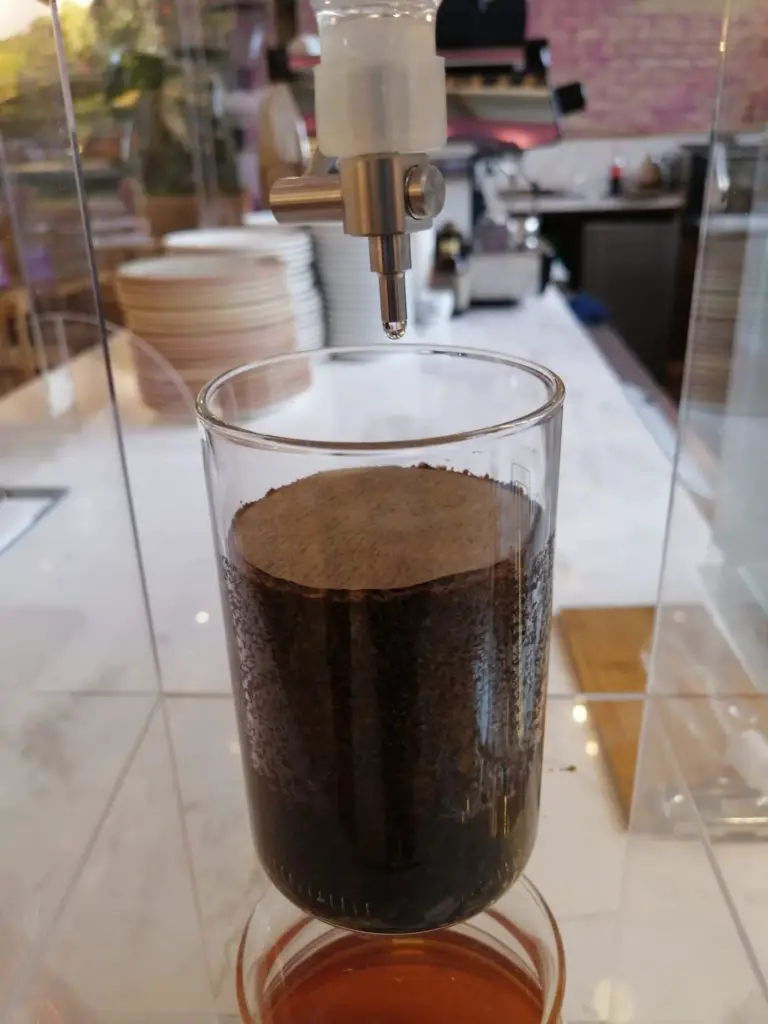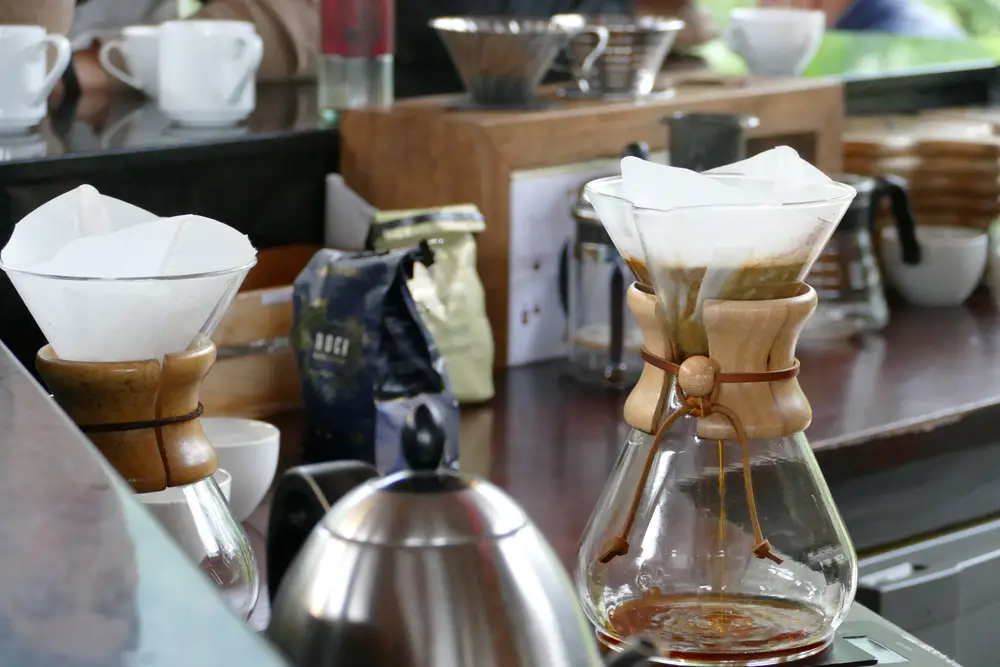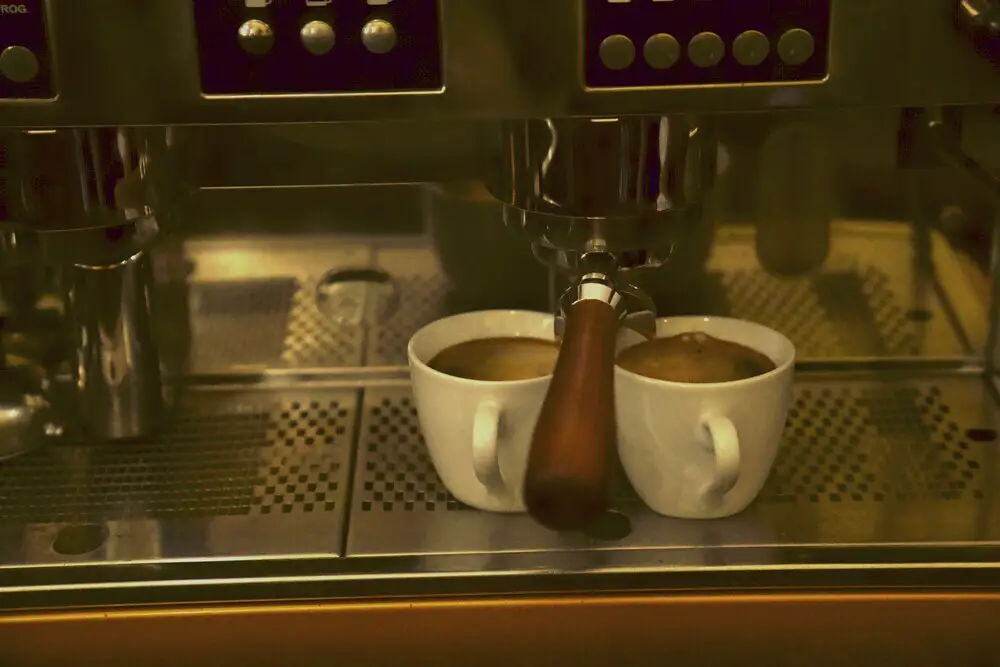Coffee is very versatile and can be combined with a wide variety of dishes.
Depending on your taste, the thought of mixing coffee with alcohol is probably tempting. These are two drinks with a complex manufacturing process from harvest to consumption by the end consumer.
Table of Contents
Characteristics of wine and coffee
Before we delve into this particular combination, we need to understand the effects of each individual drink so you can better understand what they may add to or subtract from each other in the final combination.
Benefits of drinking wine
Drinking red wine in moderation is considered a heart-healthy practice. This is due to the alcohol and antioxidants in this drink. Their action helps prevent coronary artery disease, that is, the disease that causes heart attacks.
Not only is wine heart-healthy, but it also possesses a number of benefits attributed to resveratrol. Resveratrol is produced by some plants to fight bacteria and fungi or to resist drought or nutrient deficiencies. The studies, for their part, focus on red wine since white grapes do not contain resveratrol.
Improves memory
Resveratrol can help improve short-term memory. This is based on studies that found increased word retention and faster performance in the part of the brain associated with forming new memories, learning and emotions.
Supplement for a healthy life
Resveratrol improves heart, brain and bone function. This improvement is comparable to going to the gym, so combining the two can be much better for the body.
Reducing the risk of liver disease
Associating drinking a beverage with liver benefits can be contradictory. However, studies suggest that drinking a glass of wine a day may reduce the prevalence of nonalcoholic fatty liver disease.
Reduces multiple cancer risks
Breast cancer
Red grapes are the fruit best able to suppress the activity of aromatase, the enzyme used by breast tumors to produce their own estrogen. This is what is called an aromatase inhibitor.
Colon cancer
Moderate red wine consumption can reduce colon cancer risk by 50%.
Prostate cancer
Men who drink an average of four to seven glasses of red wine a week have a 52% lower risk of developing prostate cancer than men who don’t drink wine. This is because the flavonoids and resveratrol in wine contain powerful antioxidants and can counteract androgens, the male hormones that stimulate the prostate.
Reduces the risk of diabetes
Men and women who drink moderately have a 30% lower risk of developing type 2 diabetes. Resveratrol improves insulin sensitivity. Insulin resistance is the most important critical factor contributing to the risk of type 2 diabetes.
Benefits of drinking coffee
Coffee has a number of effects on the body that go beyond a morning pick-me-up. Its benefits are associated with antioxidant effects and brain stimulation.
On the other hand, it can have unwanted side effects such as insomnia, indigestion, and increased heart rate and blood pressure. Remember that we can all react differently to what we consume. Here are some more health benefits of coffee.
Coffee as a source of antioxidants
Scientific studies have identified around 1,000 antioxidants in coffee beans. Antioxidants fight inflammation, which is the cause of many chronic diseases such as arthritis, atherosclerosis and many types of cancer.
Antioxidants help us stay healthy by protecting our cells from damage. In addition, chlorogenic acid , an important antioxidant found almost exclusively in coffee, helps prevent cardiovascular disease.
Caffeine and memory
Caffeine consumption promotes brain activity. Caffeine may affect areas of the brain responsible for memory and focus, and improve short-term memory, although it’s not clear how long the effects last and how they vary from person to person.
Coffee may reduce the risk of developing diabetes
Coffee may help prevent diabetes because it helps the body use insulin and protects the cells that produce insulin, allowing for effective blood sugar regulation. Also, as we already know, it fights inflammation, which is a known risk factor for type 2 diabetes.
for reducing the toxic buildup of abnormal proteins (amyloid fibrils) that occur in people with type 2 diabetes.
Coffee is healthy for the liver
There is an inverse relationship between coffee consumption and the level of liver enzymes in the blood. Elevated liver enzyme levels often reflect inflammation and liver damage. The more coffee the subjects drank, the lower their enzyme levels.
Coffee can improve physical performance
Caffeine is a performance and endurance donor; it not only combats fatigue, but also increases muscle contraction, reduces pain sensation and increases blood fatty acid levels, which promotes endurance.
How to pair coffee with wine?
The easiest way is to mix the two drinks in one container. But did you know that there is also a wine made from coffee? Below we will examine these cases of coffee and wine pairings.
Classic recipe for wine with a touch of coffee
This is a somewhat experimental preparation that you can adjust to your taste by varying the proportions.
Ingredients
- 2 cups of water
- 3 – 4 tablespoons coffee (ground or instant)
- 2 cups of red wine
- 1 cinnamon stick
- Sugar or honey to taste
Preparation
- Heat the water with the cinnamon and sugar for 10 minutes.
- Add the red wine and coffee and heat for another 5 minutes.
- Serve in a glass or traditional coffee cup.
Coffee wine
Unlike classic coffee cocktails like Irish Coffee, this blend isn’t as easy to make at the bar, although we’ll show you how to make this one with relative ease as it takes 60 days to ferment.
It is wine made from coffee and not from grapes or other fruits. The basis of the wine is fermented sugar, and the fruit gives it flavor.
How to make coffee wine at home?
For the production of coffee wine, you don’t actually need the wine itself, but only the tanning agents and some wine yeast.
Wine tannins are a natural chemical present in wine, particularly red wine, that originate from the solid parts of grapes, such as the skin or pips.
Ingredients
To prepare coffee wine you will need the following ingredients:
- 250 grams of whole coffee beans (you can also use instant or ground coffee).
- ¼ teaspoon wine tannins.
- 1 teaspoon wine yeast.
- 3.5 liters of water.
- 1 kg of sugar.
- 1 teaspoon yeast.
- Half a teaspoon of citric acid.
Preparation
- Bring the water to a boil in a saucepan.
- When it starts to boil, add the sugar and stir slowly until completely dissolved.
- Now add the coffee beans and wait for the water to boil again.
- Once it starts to boil again, remove the pot from the heat and let it cool completely.
- Once you’ve made sure the water has cooled, strain the entire mixture to separate the coffee grounds. Discard the coffee grounds and add the wine yeast to the remaining mixture.
- In a separate bowl, mix together the regular yeast, wine tannins, and citric acid.
- When the two mixtures are ready, mix them together in the same bowl and cover with a cloth. Now the fermentation process begins.
- From this point on, it is best to fill the mixture into an airtight container. The coffee wine should mature for at least 60 days.
- At the end of the two-month maturation period, you can serve it or keep it in a bottle.
Instructions for the preparation with instant coffee
Once it has reached the fermentation process, you don’t need to let it ferment for as long. Three weeks is normal for instant coffee.
How does the coffee wine taste?
It has a very distinct coffee flavor and also shows fruity and complex notes from the fermentation. It is very suitable as a dessert.
Where does this preparation come from?
This style of winemaking may have originated in an area north of Manila in the Philippines. The country is famous for its coffee, and recently coffee companies have started commercially bottling wine made from native coffee beans.
Conclusion
Wine and coffee are two very popular beverages in the world that share similarities in terms of their health benefits. Moreover, their combination is possible and can be as simple as pouring both into the same vessel, e.g. B. in making a wine that uses coffee instead of grapes. In this way, the coffee continues to demonstrate its versatility in combining with other ingredients and in expanding according to each individual’s taste.



